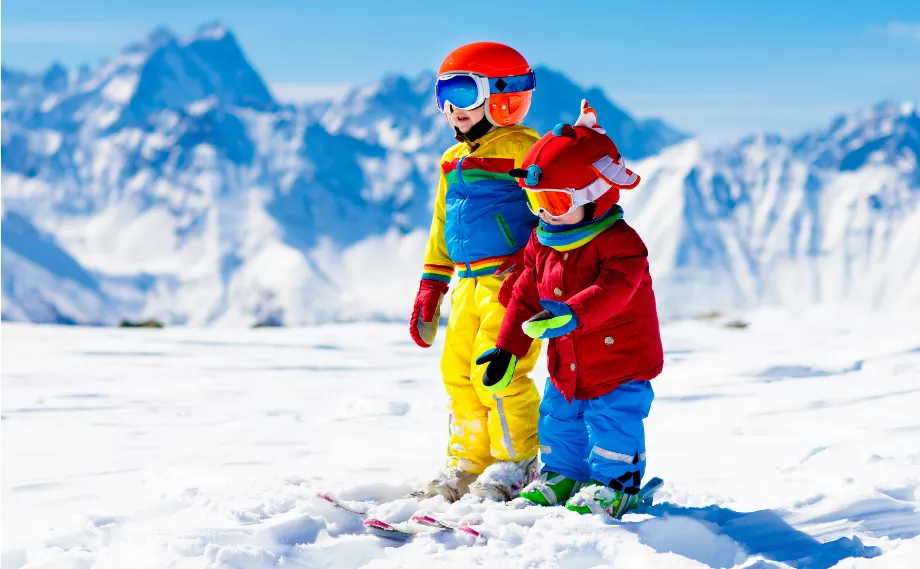Winter safety tips

Unintentional injuries are the leading cause of childhood death — more than all disease-related deaths combined. Pam Hoogerwerf offers some helpful tips to help your family have a safe, injury-free winter.
When preparing for outdoor play, dress your children in multiple thin layers to keep them warm and dry. A good rule to follow is that children need one more layer than adults. Trade scarves for neck gaiters and cotton for wool. Neck gaiters are safer than scarves because they are less likely to catch on other objects causing strangulation. Wool will retain warmth and stay drier than cotton.
We want to keep our children warm while traveling during winter months but putting on a puffy coat is not safe. A bulky coat can prevent the harness from fitting snuggly. Instead, once your child is buckled in place, place their jacket or blanket over them.
Winter is an excellent time to ensure that your home has a properly working carbon monoxide alarm on every level, particularly near sleeping areas. These must be kept at least 15 feet away from any fuel-burning appliances. Also, if you are warming up your vehicle, make sure to remove it from the garage as soon as you start it. Leaving a vehicle engine running inside a garage is extremely dangerous.
Children are at a greater risk for frostbite because heat escapes from their skin at a faster rate than adults, and they may be reluctant to leave the winter fun to go inside and warm up. Symptoms include reddened skin that becomes white, hard, and swollen and skin that burns, tingles or becomes numb. If you think your child has developed frostbite, get him or her out of the cold and seek immediate medical attention. Do not rub the skin. To help prevent frostbite, set reasonable time limits on outdoor play.
Keeping hands clean through diligent handwashing is one of the most important steps to avoiding illness and preventing the spread of germs. The Centers for Disease Control and Prevention suggest washing hands in warm or cold water for at least 20 seconds. Need a timer? Encourage children to sing or hum the “Happy Birthday” song from beginning to end twice before rinsing.
Only allow children to skate on approved surfaces. Check for signs posted by law enforcement or park staff indicating the area is safe to use. Encourage children to stay away from neighborhood creeks, lakes, and ponds during the winter months.
Be sure to use a ski/snowboard helmet before hitting the slopes. Make sure you have correct-fitting equipment that you can control. Helmets can be purchased at the Safety Store for $35.00. Goggles will protect your eyes from bright sunlight and objects that could get in the way and poke you in the eye.
Always wear a snow sport helmet when sledding. Helmets can be purchased at the Safety Store for $35.00. Always ride sleds feet-first, not head-first. Children should be joined by an adult able to see dangers that children might not see. Do not sled on hills with trees, fences, and other obstacles.
Never put a loose blanket or extra bedding in a baby’s crib. If you are concerned about keeping your baby warm during the winter while sleeping, use a sleep sack (wearable blanket).
Riding snowmobiles can be a fun way to spend time with family and friends, but fun can quickly turn into tragedy. The American Academy of Pediatrics recommends that children under age 16 not operate snowmobiles and children under age 6 should never ride on them. Children should always wear goggles and a safety helmet approved for use on motorized vehicles.
Don’t store away the sunscreen during winter months. Protect exposed skin from bitter cold, heavy winds, and winter sun by using a broad-spectrum sunscreen SPF 30 or higher. Lips are very sensitive so encourage children to wear SPF 15 (or higher) lip balm while outside. Be aware that the sun’s reflection off the snow is strong even on cloudy days.
Drownings are often associated with summer months, but hot tubs and winterized swimming pools can pose dangers as well. Children should always be supervised around water, including while near or when using a hot tub. Install safety latches on gates or door alarms to ensure children do not enter while unsupervised.